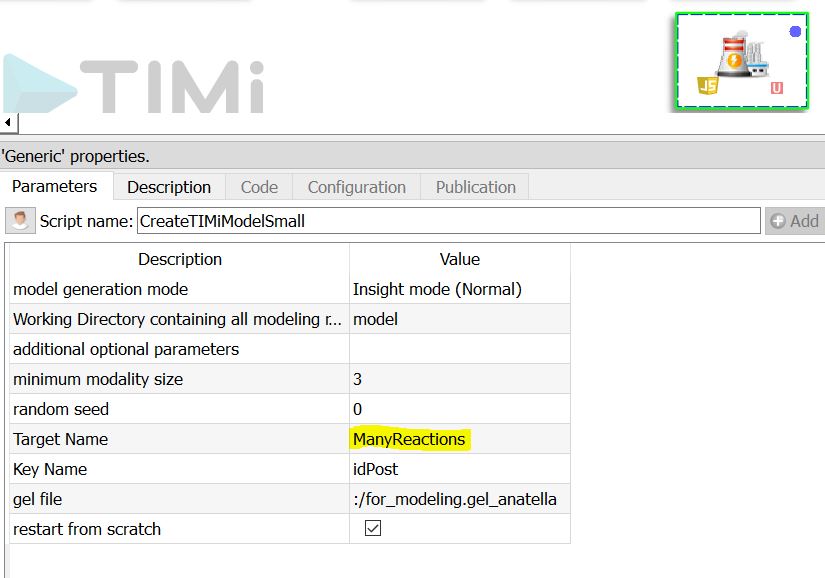
Should you put emojis in your LinkedIn posts, and if so, how many? In today’s article, I reveal the results of research I conducted on 4.599 million LinkedIn posts. This research follows the ones I’ve already published on the impact of hashtags and the word count.
If you want to be the first to receive my results, subscribe to my newsletter (don’t forget to click on the confirmation link sent to you by email).
The results in a nutshell
- Using 15 or 16 emojis in your LinkedIn post, you multiply by 2.5 the probability of getting 100 reactions. Simply put, the more emojis you put in your LinkedIn posts, the more visibility your post will get.
- Based on 4,599m LinkedIn posts analyzed, we also observe that 80% of the posts do not contain emojis
- 90.42% of LinkedIn posts contain 0, 1 or 2 emojis
- 1.5% of LinkedIn posts contain more than 10 emojis.
Detailed results
The descriptive analysis of the dataset shows that 80.12% of the messages on LinkedIn do not contain emojis. This is a good illustration of Pareto’s law.
90.42% of LinkedIn posts contain 0, 1, or 2 emojis, and only 1.5% include more than 10. The maximum observed is a post containing 1190 emojis!
The prediction model performed with Timi Modeler shows that the average probability of getting 100 likes on a LinkedIn post is 3.5987%. I calculated this probability by limiting the observations to authors with a maximum of 25000 likes (i.e., 99% of the dataset). I wanted to eliminate the outliers (too many reactions) due to large networks characteristic of famous people (Barack Obama, Bill Gates, …). You will find in the table at the bottom of this article all the results.
I have taken the results using Tableau and eliminated the outlier related to the post containing 1190 emojis.
I also included (in orange below) the percentage of posts according to the number of emojis contained.
A polynomial function gives a perfect “fit” (R²=0.96, see blue dotted line), and we see that an asymptote is reached around 18 emojis. So, there is no need to include many more.![]() A polynomial function gives a perfect “fit” (R²=0.96, see blue dotted line), and we see that an asymptote is reached around 18 emojis. So, there is no need to include many more.
A polynomial function gives a perfect “fit” (R²=0.96, see blue dotted line), and we see that an asymptote is reached around 18 emojis. So, there is no need to include many more.
Here are the essential lessons I learned from this analysis:
- not including emojis statistically decreases your chances of getting 100 likes.
- 15 or 16 emojis seem to be the optimum to increase your chances of getting 100 likes according to the prediction model, and 18 if I follow the regression realized using Tableau.
- 80% of the messages on LinkedIn do not contain emojis: putting them on allows you to differentiate yourself
As for the other analyses I published, the question of causality remains essential. At this stage, it is impossible to say what causes the reactions. Does LinkedIn’s algorithm “push” more publications that contain emojis, or is the human eye more attracted to publications that have them? A lot of work is still needed to solve this mystery and maybe even some research on eye tracking.
Methodology
To realize this research, I used a dataset of 4,599 million LinkedIn posts provided by Linkalyze. I prepared the data with Anatella, and the modeling was realized using Modeller (these 2 solutions being supplied by Timi).

The data preparation part mainly consisted of the reconciliation of 2 databases in JSON format (see diagram below):
- LinkedIn posts database
- authors database
As the emojis are not directly readable, a regular expression has been used to extract and count them. For those who want to reuse it, here it is:
/(?:[u2000-u32FF]|[ud83c-ud83e][udc00-udfff])(?:u200d(?:[u2000-u32FF]|[ud83c-ud83e][udc00-udfff]))*/g
It was then necessary to manually eliminate other signs that were also extracted but were not emojis.
The modeling consisted of predicting the probability of reaching 100 reactions with a LinkedIn post (Likes + comments). To do this, I created a “ManyReactions” variable that identifies posts that have reached the symbolic 100 reactions mark.
In the modeling, “ManyReactions” becomes the dependent variable. All the other variables of the dataset become independent variables.
Correlation between the number of emojis on a LinkedIn post and the probability of virality
| Number of emoticons | Probability of getting 100 likes on the LinkedIn post |
| 0 | 3,09% |
| 1 | 4,24% |
| 2 | 4,85% |
| 3 | 5,46% |
| 4 | 5,93% |
| 5 | 6,77% |
| 6 | 6,98% |
| 7 | 7,58% |
| 8 | 8,12% |
| 9 | 8,82% |
| 10 | 8,69% |
| 11 | 8,80% |
| 12 | 8,81% |
| 13 | 8,86% |
| 14 | 9,55% |
| 15-16 | 10,38% |
| 17-18 | 9,96% |
| 19-21 | 9,99% |
| 22-28 | 9,88% |
| 29-1190 | 7,13% |
Acknowledgments
Thanks to Frank Vanden Berghen for his help in programming the emoji extraction feature.


